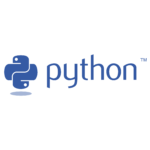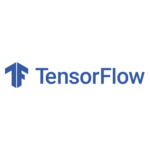Ouroboros Neurotechnologies
As AI continues to revolutionize scientific research, we believe that the next major breakthrough will come from cognitive and computational neuroscience. At Ouroboros Neurotechnologies, we develop Neuropolis, an AI system for human brain activity prediction (EEG to fMRI), using machine learning, deep learning, and large language models. Neuropolis achieved significant results in the highly complex task of predicting fMRI data from EEG data, a fundamental step for improving neural interfaces and advancing toward a multimodal foundation model for neuroscience, connecting different neuroimaging realms. Our objective is to further develop this system, which we see as the natural horizon for scientific research on the human brain, and to contribute to a responsible and socially useful development of AI.
Neuroscience Expertise
We build upon our scientific expertise in decision-making, learning, reasoning, planning, and strategic thinking, as demonstrated by a high-impact publication in Science. Our technology is also based on the practical knowledge in biofeedback, neurofeedback, and cognitive training acquired after founding and directing the Institut Lémanique du Cerveau.
Technology Stack
We primarily use Python and its data science, machine learning, deep learning, and deployment libraries, in particular NumPy, Pandas, Scikit-Learn, TensorFlow, and Django. For our open source projects, we rely on open access brain data from NeuroVault and OpenNeuro, and release our code on GitHub.






Neural Networks and Foundation Models: Two Strategies for EEG-to-fMRI Prediction
Read our preprint about the Neuropolis-X1 project (2025) on bioRxiv.
Neuropolis-X1
(2025)
In this first extension (X1) of Neuropolis, we continue the development of an artificial intelligence system for human brain activity prediction. Our objective is to predict fMRI activity from EEG activity, an endeavor that can be formulated as either a classification task, i.e., predicting whether the fMRI signal increases or decreases, or a regression task, i.e., predicting the value of this signal. To achieve this objective, we follow two distinct strategies: training machine learning and deep learning models (including feedforward neural networks, CNNs, RNNs, and transformers) on an EEG-fMRI dataset, or relying on the capabilities of pre-trained large language models (Gemma, Llama) and large multimodal models (PaliGemma). Our results show that predicting fMRI activity from EEG activity is possible for the brain regions defined by the Harvard-Oxford cortical atlas, even in the challenging context of subjects performing a cognitive task such as neurofeedback. Interestingly, both strategies yield promising results, possibly highlighting two complementary paths for predicting fMRI signals based on EEG signals. Furthermore, a Chain-of-Thought approach demonstrates that large language models can infer the cognitive functions associated with EEG data, and subsequently the fMRI data associated with these cognitive functions. The natural combination of both strategies, i.e., fine-tuning a large language model on an EEG-fMRI dataset, is not straightforward and would certainly require further study. Overall, the methods developed in this project could represent an important step for improving neural interfaces and advancing toward a multimodal foundation model for neuroscience.
Ouroboros Neurofeedback API
(2024)
This project builds an API (Django, Docker) around Neuropolis. Our objective is to compute neurofeedback (NF) scores, whether directly on the Electroencephalography (EEG) activity, or indirectly on the predicted functional Magnetic Resonance Imaging (fMRI) activity. For this task, we use a series of machine learning models trained in the Neuropolis project, including linear regression, k-nearest neighbors, decision trees, random forests, and support vector machines.
Neuropolis
(2024)
This project uses data science (NumPy, Pandas, Matplotlib), machine learning (Scikit-Learn), and deep learning (TensorFlow, Keras) tools on brain data obtained with Electroencephalography (EEG) and functional Magnetic Resonance Imaging (fMRI). Our objective is to build an artificial intelligence system for human brain activity prediction, using EEG data to predict fMRI data, whether across experimental conditions or across subjects. For this regression task, we use a variety of machine learning and deep learning models, including linear regression, k-nearest neighbors, decision trees, random forests, support vector machines, fully connected neural networks, convolutional neural networks, recurrent neural networks, and transformers. Our results show that using EEG data to predict fMRI data is possible to a certain extent. Nevertheless, for our voxels of interest, the regression task seems too challenging, at least for relatively simple machine learning and deep learning models, even if the deep learning models perform well on a classification task. The methods developed in this project could provide useful insights for advancing toward a multimodal foundation model for neuroscience, and could help to improve promising brain technologies, such as neurofeedback systems and brain-computer interfaces.
Ouroboros EEG-fMRI NF
(2022)
This project uses data science (NumPy, Pandas, Matplotlib), machine learning (Scikit-Learn) and deep learning (TensorFlow) tools on bandpowers obtained with Electroencephalography (EEG), brain images obtained with functional Magnetic Resonance Imaging (fMRI), and Neurofeedback (NF) scores computed using both techniques. Our objective is to explore several ways to apply machine learning models to EEG-fMRI NF data, using a dataset from the open data repository OpenNeuro. Specifically, we use machine learning models to classify brain images, to predict the value of the fMRI BOLD signal and fMRI NF scores, and to predict the value of the EEG bandpowers and EEG NF scores. Our results show that some of these tasks are possible, suggesting that machine learning can be used to extract subtle patterns from EEG and fMRI data in the context of NF training.
Ouroboros EEG-fMRI
(2022)
This project uses data science (NumPy, Pandas, Matplotlib) and machine learning (Scikit-Learn) tools on bandpowers obtained with Electroencephalography (EEG) and brain images obtained with functional Magnetic Resonance Imaging (fMRI). Our objective is to train machine learning models to predict EEG activity from fMRI activity, and vice versa, using a dataset from the open data repository OpenNeuro. Specifically, we use machine learning models with EEG predictors to predict the value of the fMRI BOLD signal, and machine learning models with fMRI predictors to predict the value of the EEG bandpowers. Our results show that both tasks are possible, suggesting that each technique provides some insight on processes that are, traditionally, in the realm of the other technique.
Ouroboros fMRI
(2021)
This project uses data science (NumPy, Pandas, Matplotlib), machine learning (Scikit-Learn) and deep learning (TensorFlow) tools on statistical maps of the human brain obtained with functional Magnetic Resonance Imaging (fMRI). Our objective is to train machine learning models to recognize and predict brain activity, using a dataset from the open data repository NeuroVault. Specifically, we use machine learning models to classify brain images, and to predict the values of voxels inside these brain images. Our results show that both classification and regression are possible, suggesting that the statistical maps obtained in this experimental setup contain relevant and generalizable knowledge about the brain activity.
Institut Lémanique du Cerveau
(2017-2022)
We build on the practical knowledge acquired after founding and directing the Institut Lémanique du Cerveau. During several years, this institute has created and delivered innovative biofeedback, neurofeedback, and cognitive training services, based on real-time monitoring of brain states and algorithmic transitions, using physiological, neurological (EEG), and psychometric measures.
Maël Donoso
Ph.D. in Cognitive and Computational Neuroscience from Université Pierre et Marie Curie, today Sorbonne Université (Paris)
Certified in Data Science and Machine Learning from École Polytechnique Fédérale de Lausanne
Address
Ouroboros Neurotechnologies
Place de la Riponne 5
1005 Lausanne
contact@ouroboros-neurotechnologies.com
Contact
You are welcome to contact us by email or using this form:



